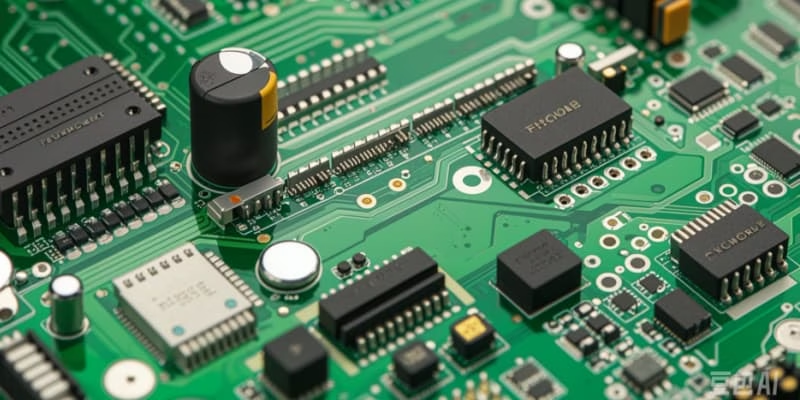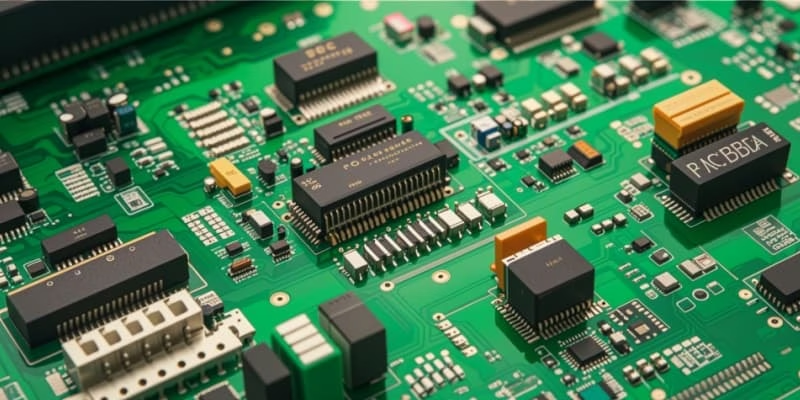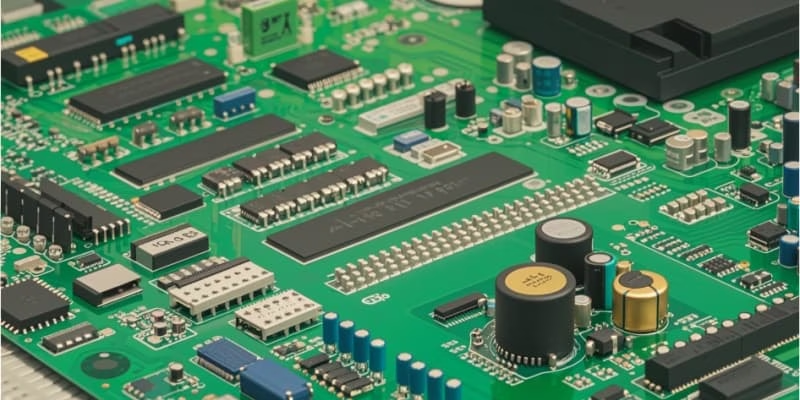Top 5 PCB Assembly Manufacturers in China 2025 - Ultimate Guide
Table of Contents
Introduction
PCB Assembly refers to the process of mounting and soldering electronic components onto a Printed Circuit Board (PCB) to form functional electronic circuits. This process primarily involves Surface Mount Technology (SMT) and/or Through-Hole Technology (THT) assembly methods. In the ever-evolving field of electronic manufacturing, Printed Circuit Board Assembly (PCBA) plays a pivotal role in bringing cutting-edge devices to life. As the backbone of all electronic devices, the quality of PCB assemblies directly impacts product performance and reliability.
As a global hub for electronic manufacturing, China’s PCB assembly industry has developed remarkably, leveraging professional expertise, advanced technology, and cost-effective solutions to meet the diverse demands of various end markets and regions.
Welcome to “Top 5 PCB Assembly Manufacturers in China 2025 – Ultimate Guide” This comprehensive guide aims to assist engineers, procurement specialists, and decision-makers in understanding the vast potential of PCB assembly services in China. Whether you’re a startup seeking a reliable partner or an established company looking to optimize your supply chain, this guide provides in-depth insights into the industry’s leading manufacturers.

Why Choose PCB Assembly Manufacturers in China
1.Cost-Effectiveness
Due to lower labor costs and mature, efficient manufacturing processes, China offers significant cost savings in PCB assembly services. These savings are achieved without compromising quality, making China an attractive option for businesses aiming to reduce production expenses.
- Competitive Pricing: Chinese manufacturers provide high-quality PCB assembly at competitive prices.
- Economies of Scale: Large-scale production capabilities lower unit costs.
- Reduced Overhead: Streamlined processes and local sourcing reduce operational expenses.
2.Advanced Manufacturing Capabilities
Chinese PCB assembly manufacturers are equipped with state-of-the-art technology and equipment, enabling them to handle complex and high-density PCB designs.
- Surface Mount Technology (SMT) : High-speed SMT lines for precise component placement.
- Through-Hole Technology (THT) : Expertise in THT for components requiring strong mechanical bonds.
- Multi-Layer PCBs: Capability to produce multi-layered boards for advanced applications.
- Flexible and Rigid-Flex PCBs: Manufacturing of PCBs that can bend or flex as needed.
3.One-Stop PCB Assembly Services
Many Chinese manufacturers offer comprehensive end-to-end PCB assembly services from design to delivery.
- Design for Manufacturability (DFM) : Assistance in optimizing PCB designs for efficient production.
- Component Sourcing: Strong relationships with component suppliers for genuine parts at lower costs.
- PCB Fabrication and Assembly: Integrated services streamline the production process.
- Logistics Support: Expertise in international shipping and customs clearance.
4.High Quality and Reliability
Manufacturers in China adhere to strict quality control standards, ensuring reliable and high-performance PCB assemblies.
- Quality Certifications: ISO 9001, ISO 14001, ISO 13485, and IATF 16949 certifications ensure adherence to international standards.
- IPC Standards Compliance: Compliance with IPC-A-610 standards for acceptability of electronic assemblies.
- Comprehensive Testing: Including Automated Optical Inspection (AOI) , X-ray Inspection, In-Circuit Testing (ICT) , and Functional Testing (FCT) .
5.Mature Supply Chain Ecosystem
China’s well-established electronics manufacturing ecosystem provides numerous advantages.
- Component Availability: Easy access to a wide range of components, including hard-to-find parts.
- Supplier Networks: Extensive networks reduce procurement times and costs.
- Raw Material Sourcing: Availability of quality raw materials enhances production efficiency.
6.Excellent Customer Service and Communication
Chinese manufacturers focus on providing exceptional customer support.
- Multilingual Teams: English-speaking staff facilitate clear communication.
- Dedicated Account Managers: Personalized support for project management.
- Responsive Communication: Quick responses to inquiries and updates.

Key Factors to Consider When Choosing a PCB Assembly Partner
1.Manufacturing Capabilities
Your PCB assembly partner must possess the technical capabilities to meet your project’s specific requirements. This includes handling various types of PCBs, such as single-sided, double-sided, multi-layer, rigid, flexible, and rigid-flex boards.
- Technological Expertise: Proficiency in Surface Mount Technology (SMT) , Through-Hole Technology (THT) , and mixed assembly methods.
- Complexity Handling: Ability to manufacture High-Density Interconnect (HDI) PCBs and work with fine-pitch components like BGAs, QFNs, and CSPs.
- Equipment Quality: State-of-the-art machinery for precision and efficiency, such as automated pick-and-place machines, reflow ovens, and wave soldering equipment.
- Prototype to Mass Production: Capacity to scale production from quick-turn prototypes to large-volume manufacturing without compromising quality.
2.Quality Assurance and Certifications
Quality is paramount in PCB assembly to ensure the reliability and longevity of your products. A partner with robust quality assurance processes minimizes the risk of defects and failures.
- Quality Management Systems: Certifications like ISO 9001 demonstrate adherence to international quality standards.
- Industry-Specific Certifications: Such as ISO 13485 for medical devices, IATF 16949 for automotive, and AS9100 for aerospace applications.
- Compliance with Standards: Adherence to IPC-A-610 standards for electronic assemblies.
- Testing Procedures: Comprehensive testing, including Automated Optical Inspection (AOI) , X-ray Inspection, In-Circuit Testing (ICT) , and Functional Testing (FCT) .
3.Experience and Expertise
An experienced PCB assembly partner brings valuable insights and problem-solving skills to your project, reducing the likelihood of errors and delays.
- Industry Experience: A proven track record in your specific industry (e.g., consumer electronics, telecommunications, automotive, medical devices).
- Technical Expertise: Skilled engineers who can provide Design for Manufacturability (DFM) and Design for Testability (DFT) recommendations.
- Project Portfolio: Examples of successfully completed projects similar to yours.
4.Component Sourcing and Supply Chain Management
Reliable component sourcing ensures the authenticity and quality of parts, preventing counterfeit components that can compromise product performance.
- Authorized Distributor Relationships: Access to genuine components from reputable suppliers.
- Supply Chain Efficiency: Ability to manage lead times and mitigate risks like component shortages.
- Global Sourcing: Capabilities to source components internationally for cost savings and availability.
- Inventory Management: Systems in place to handle consigned and turnkey components effectively.
5.Communication and Customer Service
Effective communication is essential for project clarity, timely updates, and swift resolution of any issues that may arise.
- Language Proficiency: English-speaking support staff for clear communication.
- Responsive Team: Prompt replies to inquiries and proactive updates on project status.
- Dedicated Account Managers: A single point of contact to streamline communication.
- Transparency: Open sharing of information regarding processes, challenges, and solutions.
6.Lead Time and On-Time Delivery
Timely delivery is critical to meeting market demands and maintaining a reliable supply chain.
- Production Turnaround Times: Ability to meet your project deadlines, including prototyping and mass production.
- Capacity for Rapid Scaling: Flexibility to increase production volumes as needed.
- On-Time Delivery Record: Historical performance in meeting delivery schedules.

Top 5 PCB Assembly Manufacturers in China
1.PCBAYCT
- 15+ years of experience, a strong factory focusing on PCBA R&D and production (with advanced production and testing equipment)
- The founder started from the quality grassroots in a Korean-funded enterprise, has 10+ years of quality management experience, and established the factory with “quality“.
- 12 experienced professional R&D teams support product development and customization
Stable and reliable supply chain resources (including overseas supply chains) can effectively shorten delivery time while ensuring quality. - 10+ years of professional experience in serving European and American customers in PCBA, with customers in the United States, the United Kingdom, Italy, Germany, etc.
2.Hitech Circuits
- High-Frequency and Multilayer PCB Manufacturing: Hitech Circuits supports over 40-layer High-Density Interconnect (HDI) boards and RF/microwave PCBs. Utilizing high-frequency materials like Rogers and Taconic, they cater to applications in 5G communication base stations and radar systems.
High-Speed SMT Production Lines: With placement speeds reaching 28,000 Components Per Hour (CPH) , they support 0.5mm pitch BGA packages and 0201 micro components. Their nitrogen-protected reflow soldering process reduces oxidation defects, enhancing soldering quality.
End-to-End Services: Hitech Circuits offers comprehensive services covering Design for Manufacturability (DFM) optimization, rapid prototyping (delivering 4-layer PCBs within 24 hours), mass production, and turnkey solutions, including component procurement and supply chain management.
Certifications and Testing: They hold ISO 9001, RoHS, and UL certifications. Testing services include Automated Optical Inspection (AOI) , flying probe testing, and Environmental Stress Screening (ESS) to ensure product reliability.
3.PCBWay
One-Stop PCB Assembly Platform: PCBWay integrates PCB design, stencil fabrication, SMT assembly (supporting 0.2mm pitch BGA), and functional testing. They accommodate special processes like aluminum substrates and flexible PCBs, catering to diverse project needs.
Environmental Compliance: Adhering strictly to RoHS and REACH standards, PCBWay offers lead-free processes and low-halogen material options, emphasizing their commitment to environmental responsibility.
Global Delivery Network: With UL certification and an ISO 9001 quality management system, PCBWay serves markets across Europe, America, and Asia, supporting small-batch customization to meet various client demands.
4.Eashub
Hybrid Technology Integration: Eashub combines Surface Mount Technology (SMT) and Through-Hole Technology (THT) to handle rigid-flex boards and complex multilayer structures. They support blind and buried vias and impedance-controlled designs, crucial for high-performance PCBs.
Rapid Prototyping Development: Offering 48-hour quick prototyping services, Eashub is equipped with X-ray inspection and 3D Solder Paste Inspection (SPI) systems to ensure superior soldering quality and reliability.
Industry Adaptability: Certified with ISO 13485 for medical devices and IATF 16949 for automotive applications, Eashub meets the strict requirements of high-reliability scenarios, making them suitable for critical industry sectors.
5.RayMing Technology
Advanced Packaging Technologies: Specializing in QFN, BGA, and CSP packaging, RayMing Technology supports 0.3mm micro-hole drilling and achieves precision with 10μm line width/spacing, catering to intricate PCB designs.
Comprehensive Quality Control: Utilizing a combination of AOI, X-ray, and In-Circuit Testing (ICT) , they ensure rigorous quality assurance. Additionally, Functional Testing (FCT) simulates actual load environments to verify performance under real-world conditions.
Material Diversity: RayMing offers a variety of materials, including FR-4, high-Tg materials, metal substrates (such as aluminum), and ceramic substrates, accommodating the needs of high-power LED applications and automotive electronics.
Critical Success Factors for High-Quality PCB Assembly
1.Design Excellence
Design for Manufacturability (DFM): Optimize component placement, trace routing, and thermal management to simplify assembly and reduce defects.
Design for Testability (DFT): Include test points and modular layouts to facilitate post-assembly inspection and troubleshooting.
Simulation Tools: Use software to predict thermal, mechanical, and signal integrity issues during the design phase.
2.Component Quality and Management
Supplier Qualification: Source components from certified vendors to avoid counterfeit or substandard parts.
Traceability: Implement systems (e.g., barcoding) to track components throughout the supply chain.
Moisture Sensitivity Handling: Proper storage and pre-assembly baking for moisture-sensitive devices (MSDs).
3.Advanced Assembly Processes
Precision Soldering: Control reflow/wave soldering profiles and use high-quality solder paste/flux.
Surface Mount Technology (SMT): Utilize automated pick-and-place machines for accurate component positioning.
Through-Hole Technology (THT): Ensure proper manual or wave soldering for connectors and large components.
4.State-of-the-Art Equipment
Automated Optical Inspection (AOI): Detect soldering defects, misalignments, and missing components.
X-Ray Inspection: Verify hidden joints (e.g., BGAs, QFNs) and internal layer integrity.
Calibration/Maintenance: Regularly service machinery to maintain precision and consistency.
5.Rigorous Quality Control
In-Circuit Testing (ICT): Validate electrical performance and connectivity.
Functional Testing: Simulate real-world operating conditions to ensure reliability.
Environmental Stress Testing: Conduct thermal cycling, vibration, and humidity tests.

Frequently Asked Questions
Q: How to Ensure the Reliability and Quality of PCBA?
Design Stage:
- Follow DFM (Design for Manufacturability) Rules: Avoid issues like minimal pad spacing and uneven heat dissipation.
- Use Simulation Tools: Optimize signal integrity (SI) and power integrity (PI) through tools like SI/PI analysis.
Manufacturing Process:
- Select High-Precision Equipment: Utilize machines with placement accuracy of ±0.025mm and high-quality materials such as silver-containing solder paste.
- Defect Detection: Use Automated Optical Inspection (AOI) and X-ray inspection to identify soldering defects like cold joints and bridging.
Testing and Certification:
- Perform Environmental Stress Tests: Simulate extreme conditions with temperature cycling and vibration testing.
- Compliance: Adhere to IPC-A-610 (Acceptability of Electronic Assemblies) and obtain industry certifications like ISO 9001.
Q: How to Address Design Challenges of High-Density Interconnect (HDI) Boards?
Technical Challenges:
- Microvias: Small via diameters (<0.1mm), blind/buried vias, and ultra-thin copper foils (≤18μm) increase processing difficulty.
- Signal Crosstalk and Impedance Control: Tight tolerance control (±5%) affects high-frequency performance.
Solutions:
- Use Any-Layer HDI Technology: Achieve multi-layer interconnections through laser drilling.
- Select Low-Loss Materials: Employ materials like Panasonic MEGTRON 6 and utilize precise impedance calculation tools.
Q: How to Manage Component Shortages and Supply Chain Risks?
Preventive Measures:
- Diversify Supplier Base: Avoid reliance on a single source by partnering with multiple vendors (e.g., collaborating with both TI and NXP).
- Implement Alternate Part Management: Pre-validate compatible substitute parts (Alt PN).
Emergency Strategies:
- Adopt JIT and VMI: Use Just-In-Time (JIT) and Vendor Managed Inventory (VMI) to reduce inventory pressures.
- Long-Term Agreements (LTA) : Sign LTAs with distributors to secure critical components like MCUs and FPGAs.
Q: How to Optimize PCBA Costs Without Sacrificing Performance?
Design Optimization:
- Reduce Layer Count: Modify designs from 8 layers to 6 layers when possible; use standard substrates like FR-4 instead of high-frequency materials.
- Avoid Overdesign: Eliminate redundant test points and unnecessary features.
Production Strategies:
- Batch Consolidation: Combine multiple customer orders onto a single panel to reduce unit costs.
- Local Component Substitution: Replace imported models with local equivalents (e.g., using GD32 instead of STM32).
Data-Driven Improvements:
- Implement SPC: Use Statistical Process Control (SPC) to reduce rework rates, aiming to control defect rates within ≤500 DPPM (Defective Parts Per Million).
Summary
As modern products demand greater functionality within smaller, more compact formats, the PCB assembly process must evolve to meet these challenges. This evolution necessitates the adoption of more precise equipment, the capability to handle smaller components, improved inspection systems, and an unwavering focus on quality. China emerges as a pivotal player in this landscape, offering a vast array of advanced assembly facilities that cater to a wide spectrum of needs—from rapid prototyping to low and high-volume PCB assembly. These facilities are known not only for their technological advancements but also for delivering exceptional quality, service, transparency, and excellence in program management.
By partnering with the premier manufacturers highlighted in the article, global companies can harness China’s PCB assembly value proposition. This partnership enables them to achieve technology leadership, quality excellence, and cost competitiveness. Such advantages are critical for companies aiming to compete and succeed on a global scale across various dynamic end markets and applications. Leveraging China’s advanced PCB assembly capabilities allows these companies to stay ahead in innovation while maintaining economic efficiency, thus meeting the ever-increasing demands of today’s electronics industry.

